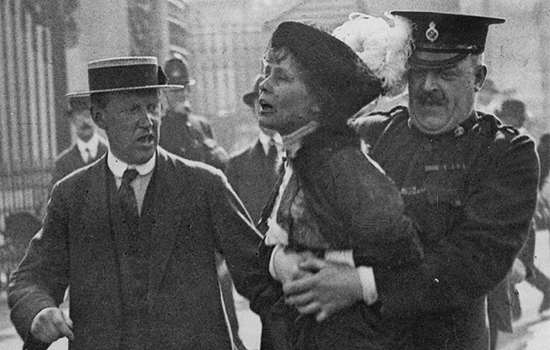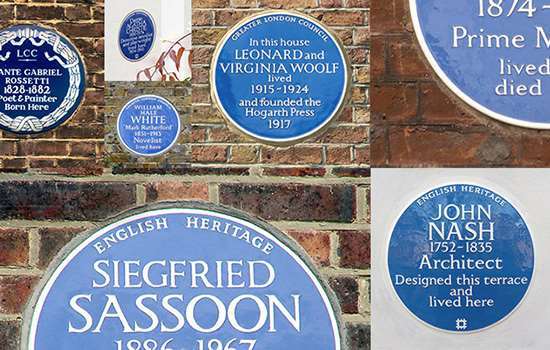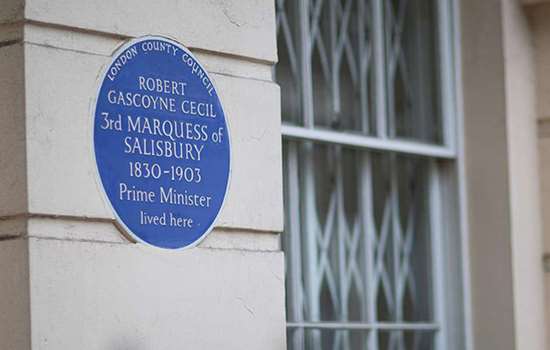BARNARDO, Thomas John (1845-1905)
Plaque erected in 2016 by English Heritage at 32 Bow Road, Bow, London, E3 4LN, London Borough of Tower Hamlets
All images © English Heritage
Profession
Philanthropist
Category
Philanthropy and Reform
Inscription
THOMAS BARNARDO 1845-1905 Founder of Dr Barnardo’s Homes for children lived here 1875-1879
Material
Ceramic
Thomas Barnardo was the founder of Dr Barnardo’s Homes. Originally set up to care for destitute children in London’s East End in the late 19th century, the organisation continues to this day as Barnardo’s, one of Britain's foremost children’s charities. Number 32 Bow Road was Thomas Barnardo’s home for five years in the 1870s, and a number of his charitable projects were located nearby.
BOW ROAD AND THE EAST END
When Thomas Barnardo travelled from his native Dublin to London’s East End in April 1866, it was with the intention of joining the China Inland Mission. But his plans for overseas missionary work were abandoned when he realised the poverty of his own neighbourhood. At this period the East End was suffering from massive unemployment, low wages, high rents, insanitary living conditions and terrible overcrowding – all exacerbated by the cholera outbreak of 1866.
In 1868 Barnardo set up his own East End Juvenile Mission in Stepney and by 1870 he had opened a home in Stepney for about 60 working and destitute boys. He had enormous energy and set up ever more schemes and projects, preaching in the streets and teaching in a ‘ragged’ school – a school which offered free basic education for the poor. The Ragged School Museum is now housed in a former free school set up by Barnardo in 1877 in Copperfield Road, Mile End, about a mile away from 32 Bow Road.
Barnardo moved into 32 Bow Road in 1875 and lived there for four years. After he left he renamed the premises Sturge House and used it as a training home for girls over 14. In the early 1900 the Salvation Army took over Sturge House (now comprising 32–36 Bow Road) as a Home for 50 ‘lads’ aged 14 to 18.
BARNARDO’S HOMES AND EMIGRATION
In 1872 he bought a great gin palace, the Edinburgh Castle in Limehouse, which he converted into a temperance coffee palace and mission. He subsequently transformed Mossford Lodge in Barkingside, Essex, into a Girls’ Village Home, with accommodation arranged in ‘family’ cottages.
Throughout the 1870s and into the 1880s the Homes increased in number, size and type. The slogan ‘no destitute child ever refused’ became an article of faith but put great financial strain on the organisation. One solution was emigration, primarily to Canada.
Barnardo argued that it was a cost-effective way of helping children, removing them from the corrupting influences of their existing environment and offering them a new, healthy life, with prospects. The scheme started in earnest in 1882 and by 1900 Barnardo was sending about a thousand children a year. A ‘boarding-out’ scheme was implemented soon afterwards; children were fostered out with respectable, religious, working people in the British countryside, before returning to the Homes, often in preparation for emigration.
CONTROVERSY
Barnardo was publicly challenged in the 1870s by rival evangelists and the Charity Organisation Society over his financial and moral virtue and, although he was exonerated, he was brought to court again for failing to return a number of children at the request of their parents. He argued that in extreme cases ‘philanthropic abduction’ was morally justifiable. His case contributed to the Custody of Children Act, 1891, which legalised the work of the private emigration societies.
In 2010 the British government issued a public apology for the child emigration programmes, which continued into the 1960s. While many of Thomas Barnardo’s practices would not be acceptable now, he is recognised for highlighting and attempting to meet the needs of destitute children at a time when there was little or no help from the state.


